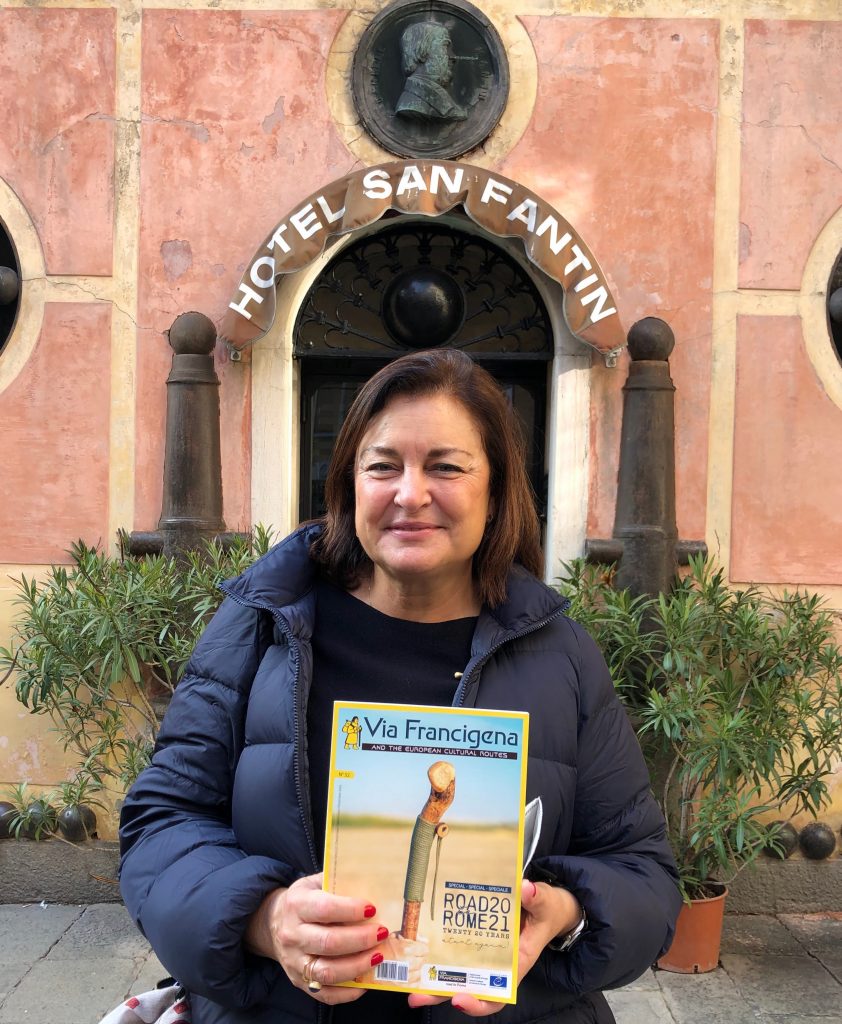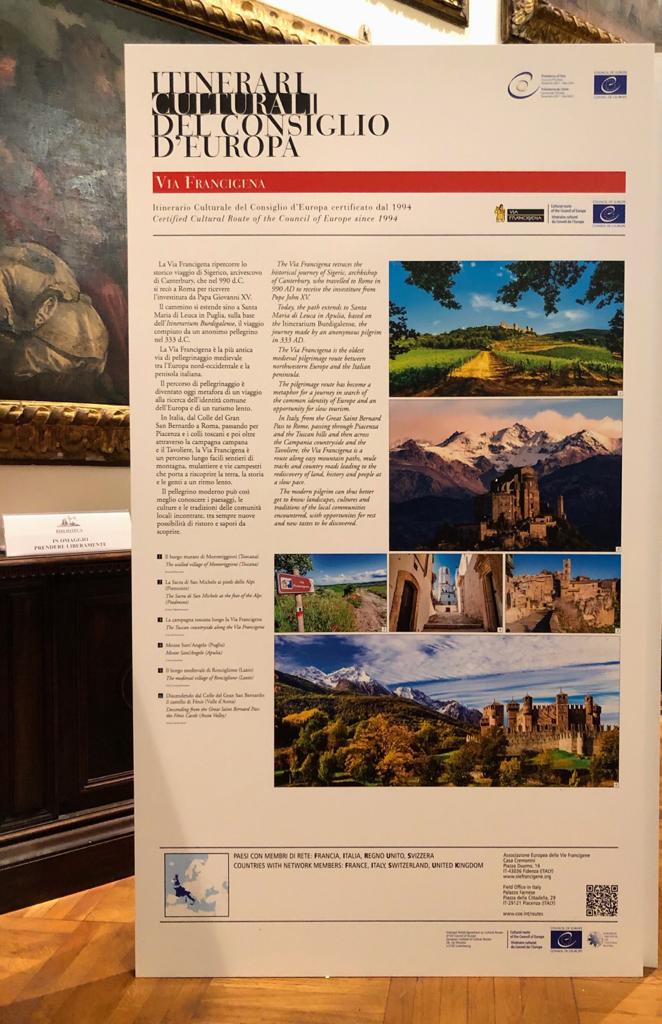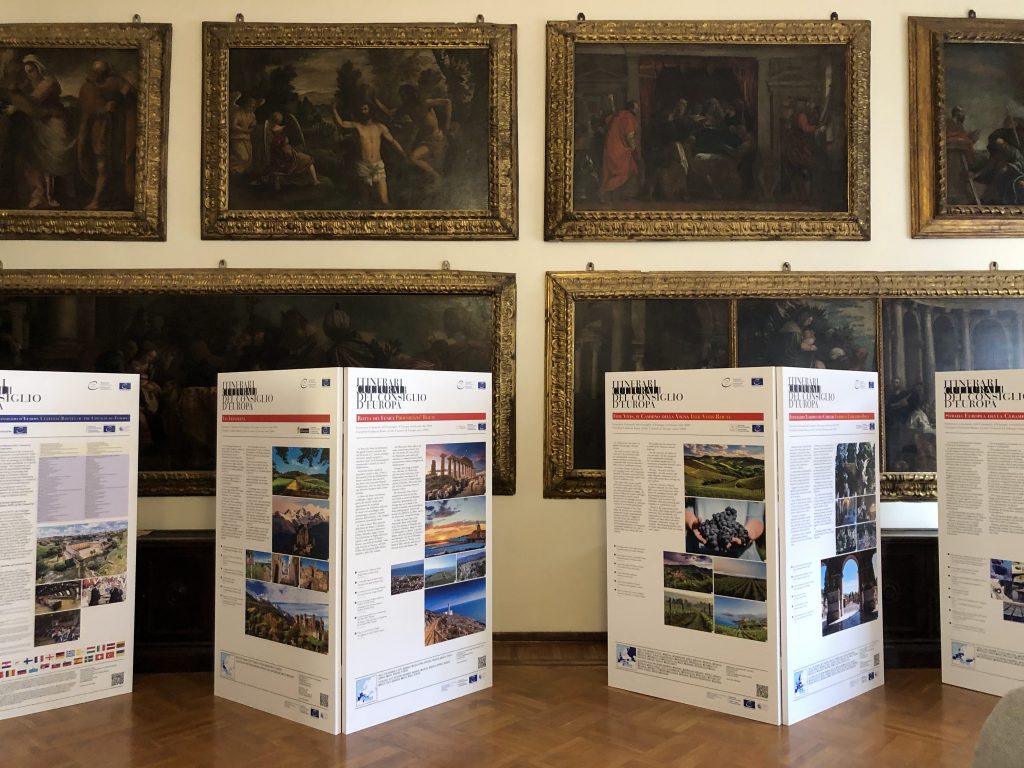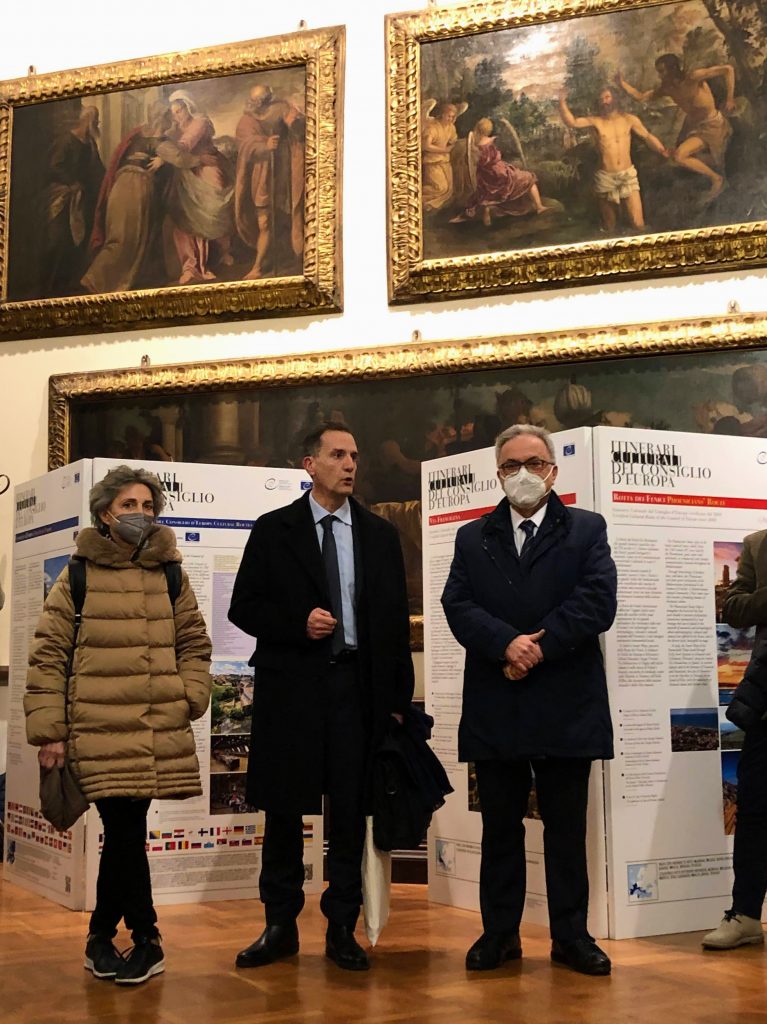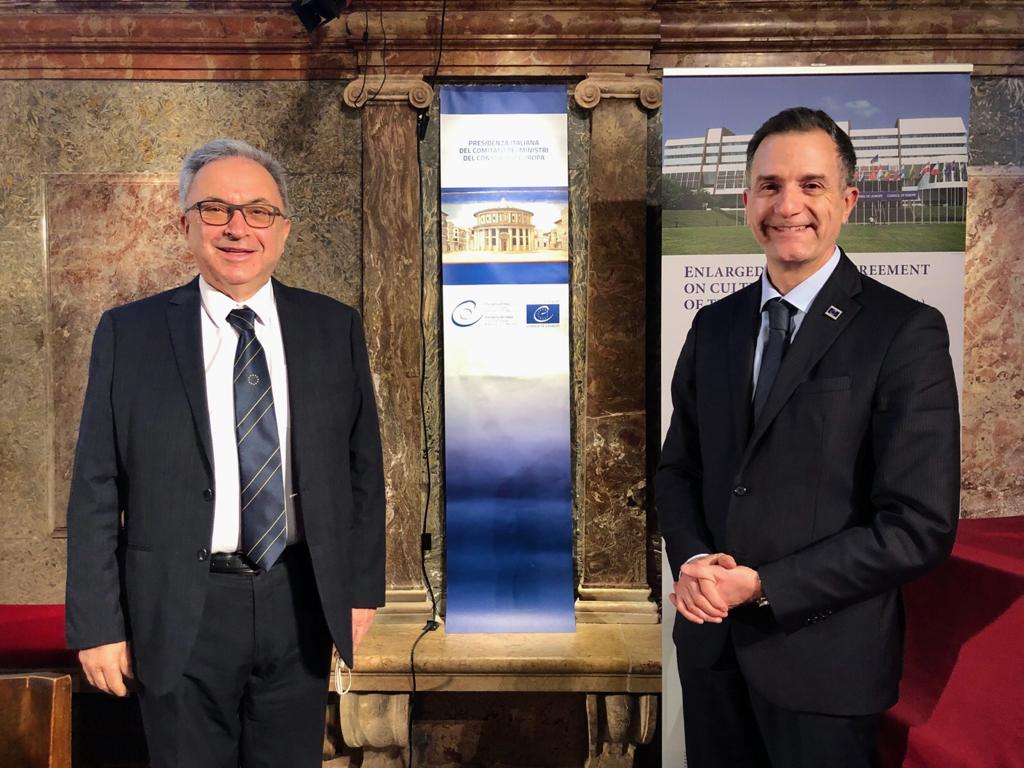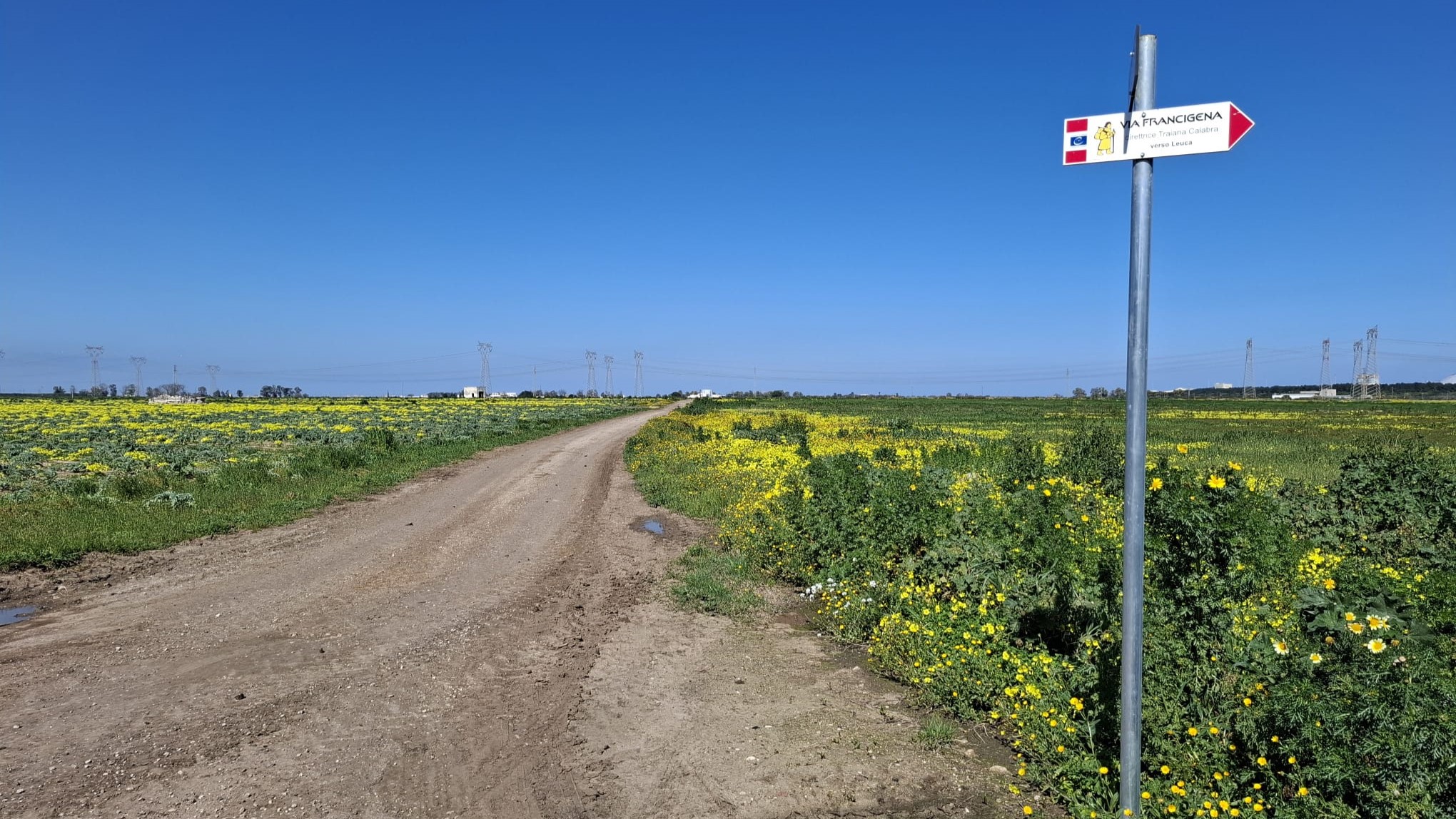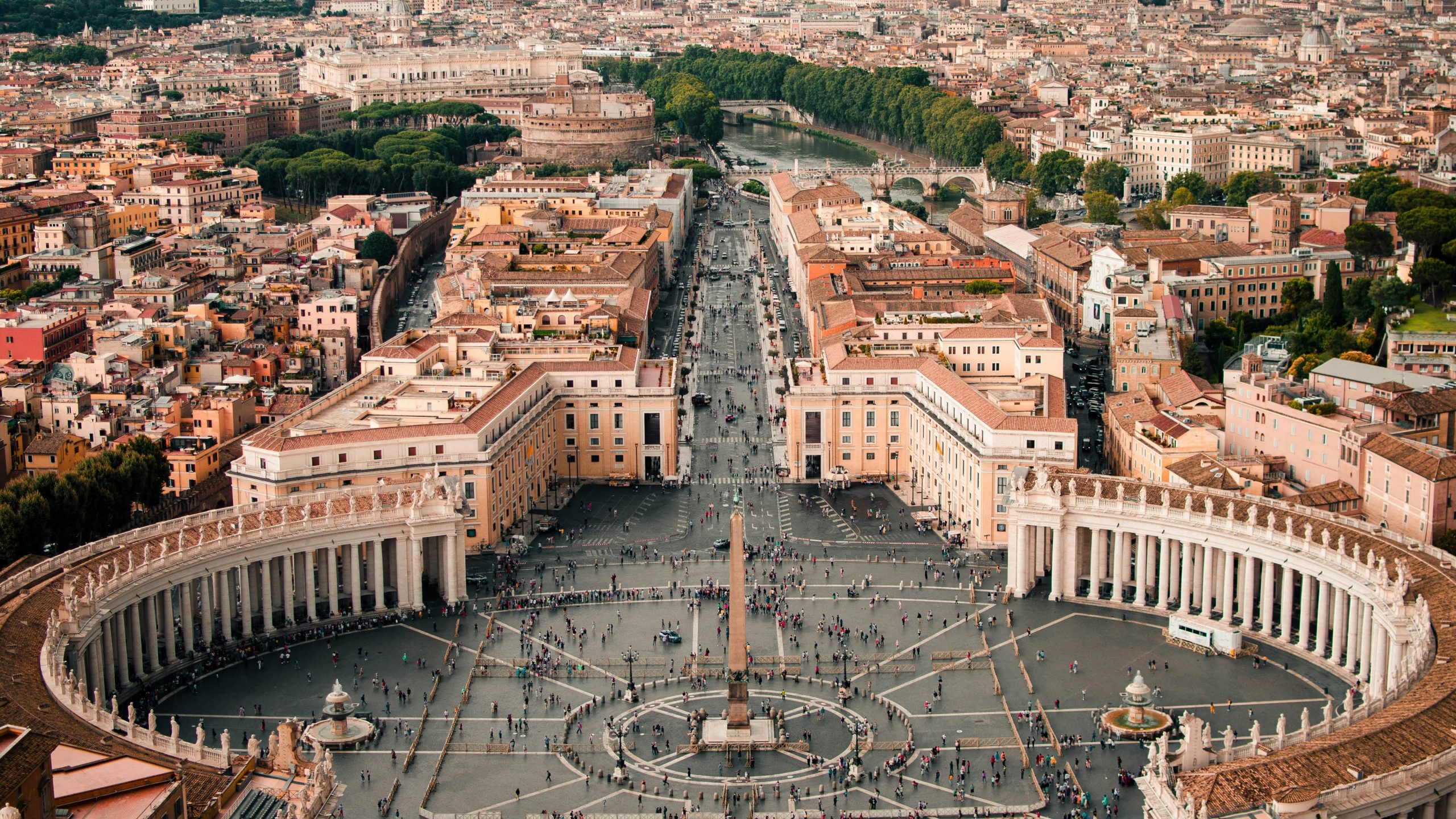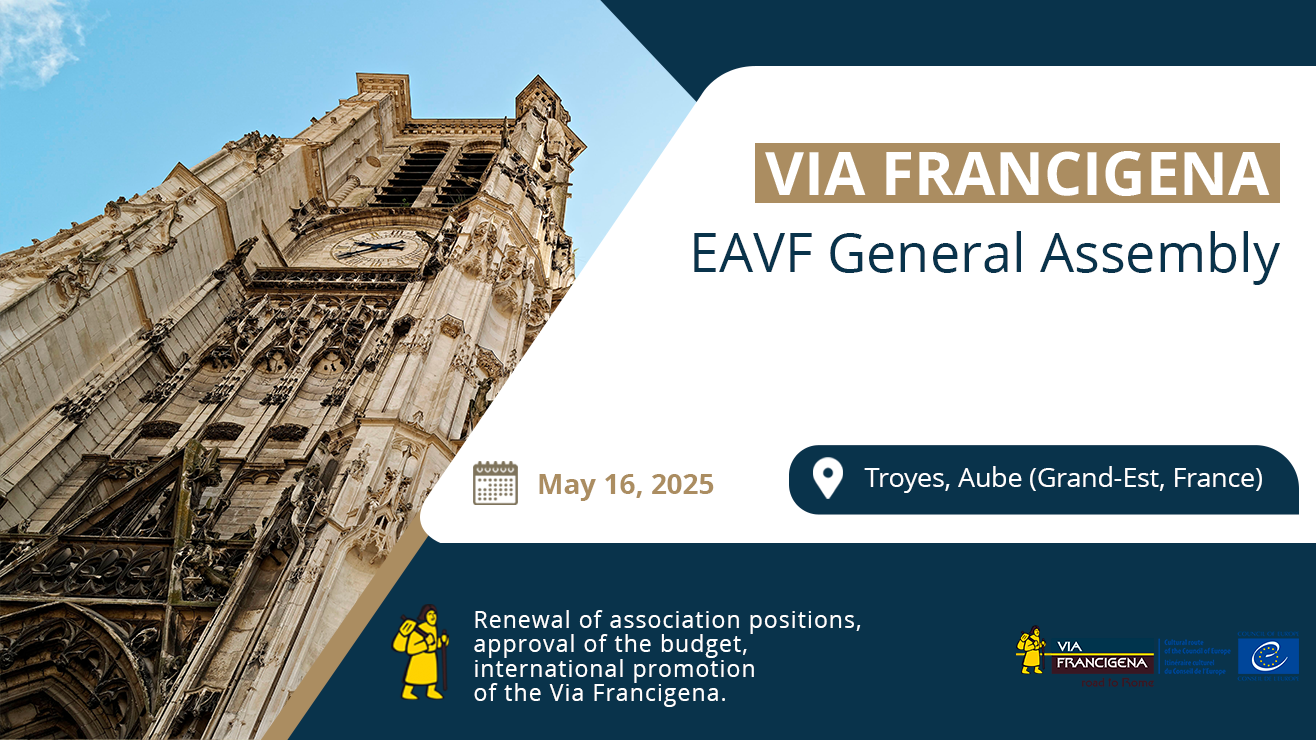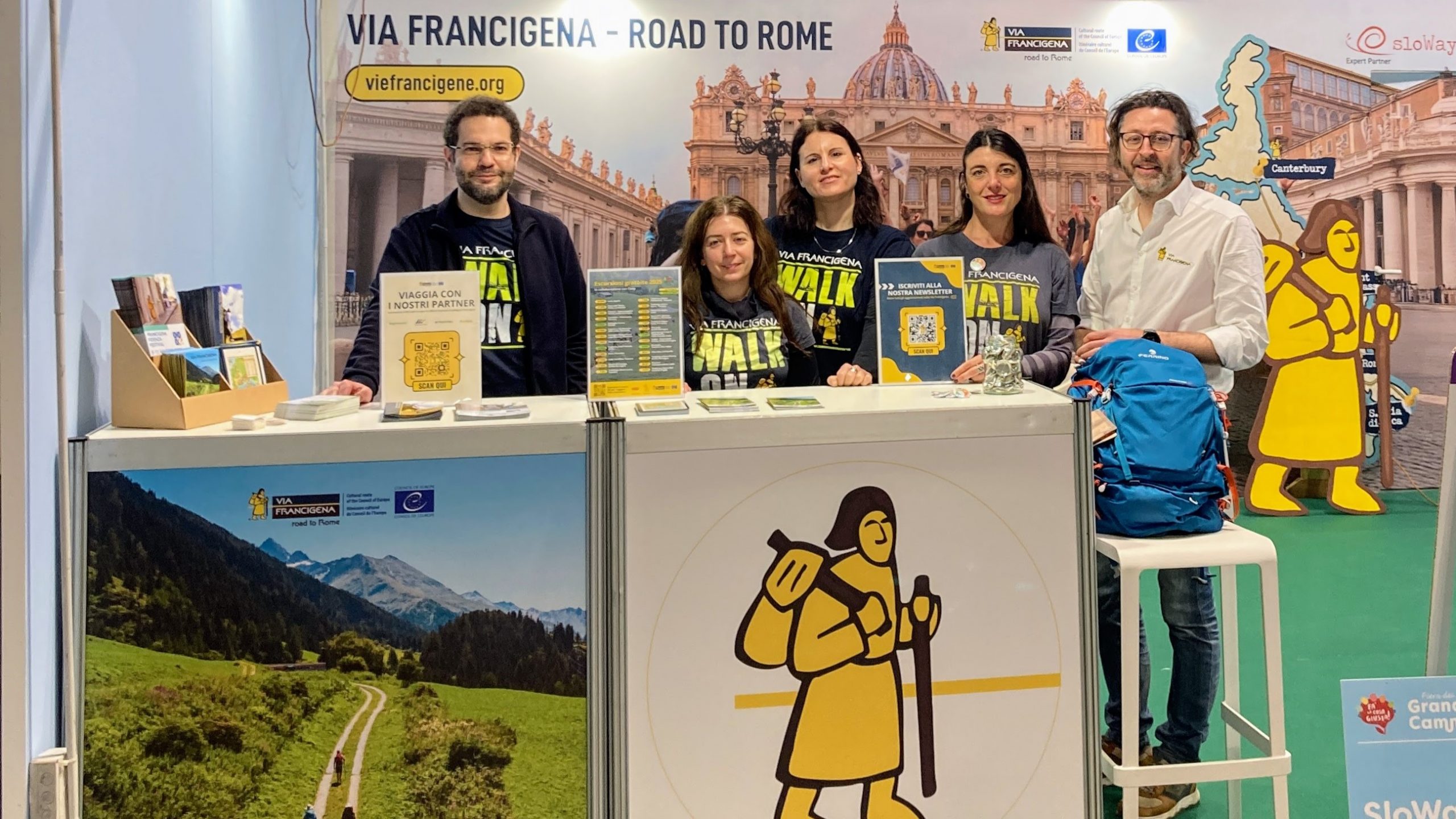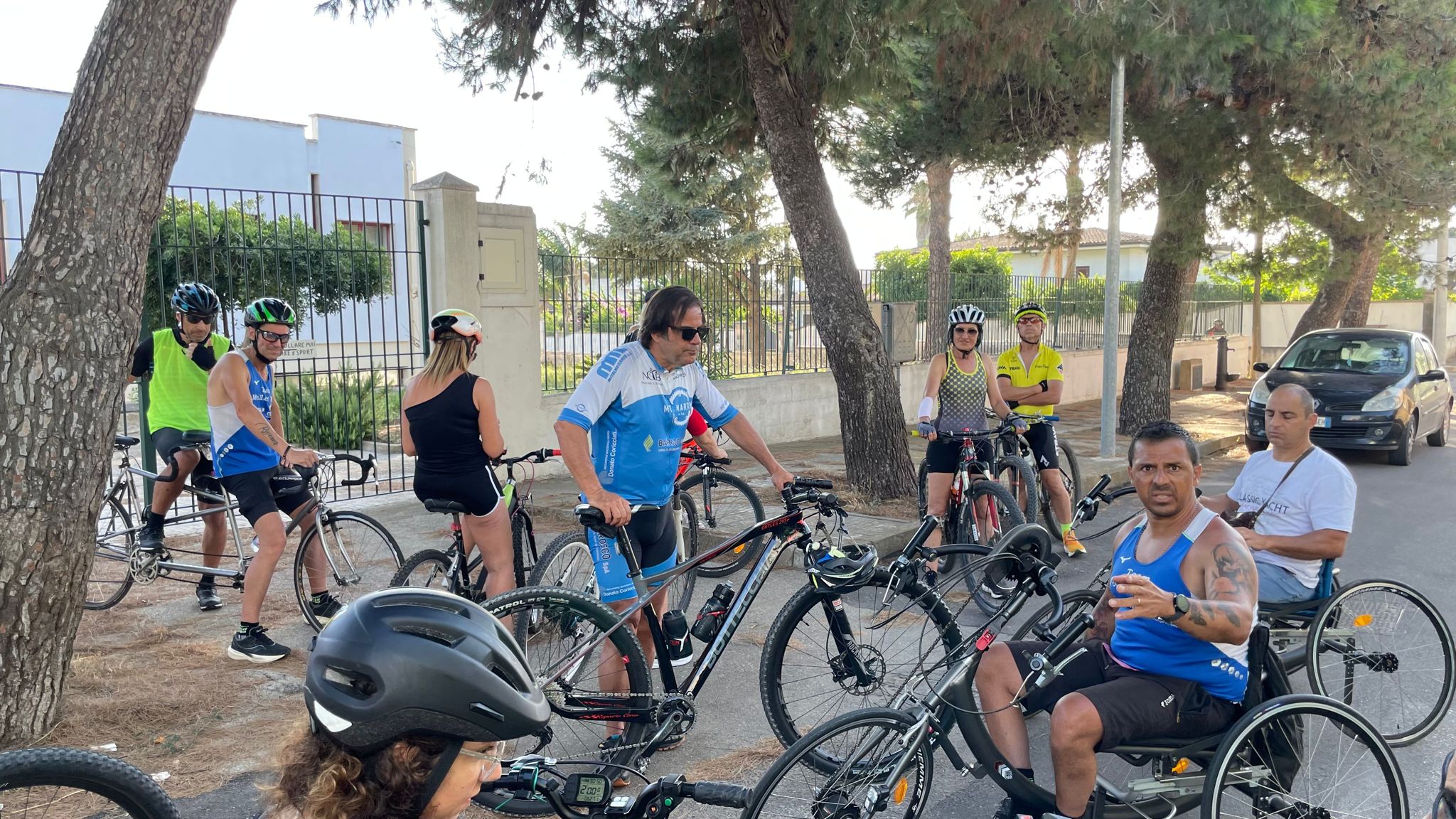On 18 February, the European Association of Via Francigena ways (EAVF) took part in an international conference in Venice regarding Italian cultural routes of the Council of Europe.
The meeting was organized by the Italian Presidency of the Committee of Ministers of the Council of Europe and by the Italian representation of the Council based in Venice, headed by Luisella Pavan-Woolfe, former ambassador of the European Union in Strasbourg.
Institutions, authorities and representatives of cultural routes attended the event with the common objective of analysing challenges and opportunities of cultural routes that cross Europe, defined as “tangible solutions for the tourism sector, compromised by the pandemic” by Filippo Maria Carnici, Vice-President of the Ateneo Veneto that hosted the conference.
Sustainable development and the recovery of tourism in the post-covid phase are the issues highlighted by Stefano Dominioni, Director of the European Institute of Cultural Routes. He recalled how “the Council of Europe can reaffirm the values of public participation and democratic citizenship within a shared Europe that belongs to everyone: an illustrious example is the Via Francigena, which, through the joint work of authorities, municipalities and territories, contributes to the shaping of a common European identity“.
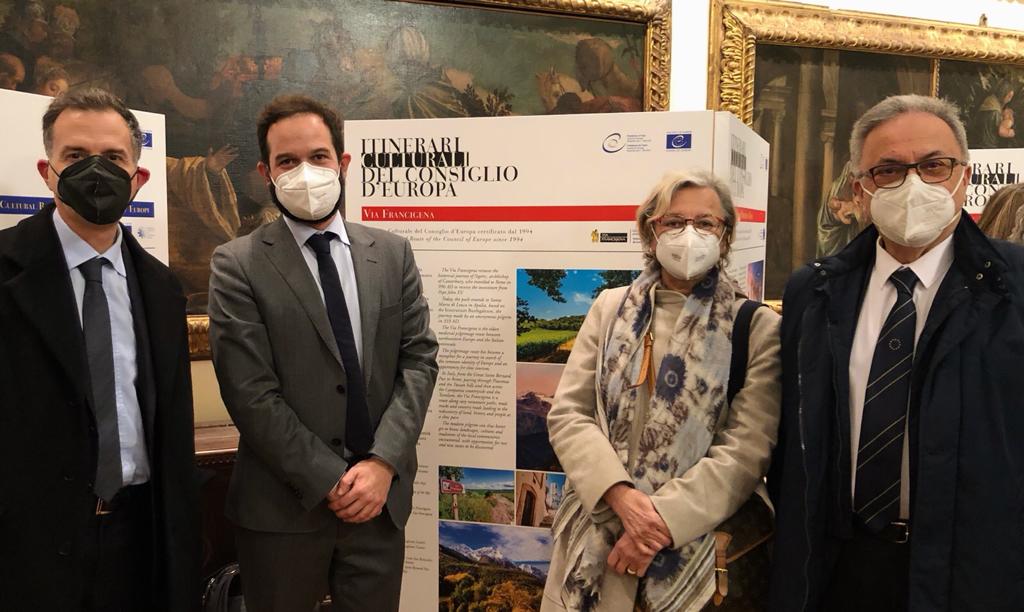
This was confirmed by Massimo Tedeschi, EAVF’s President, who recalled, during the session dedicated to European heritage and history, how the historic journey undertaken by Sigeric to reach Rome is a continuous opportunity to break down stereotypes and create a sense of common belonging: “relaunch, Europe and tangible and intangible heritage, as in people and their ideas. These were the cornerstones of the event Via Francigena. Road to Rome 2021 – the European relay race with which we celebrated the Association’s 20th anniversary“.
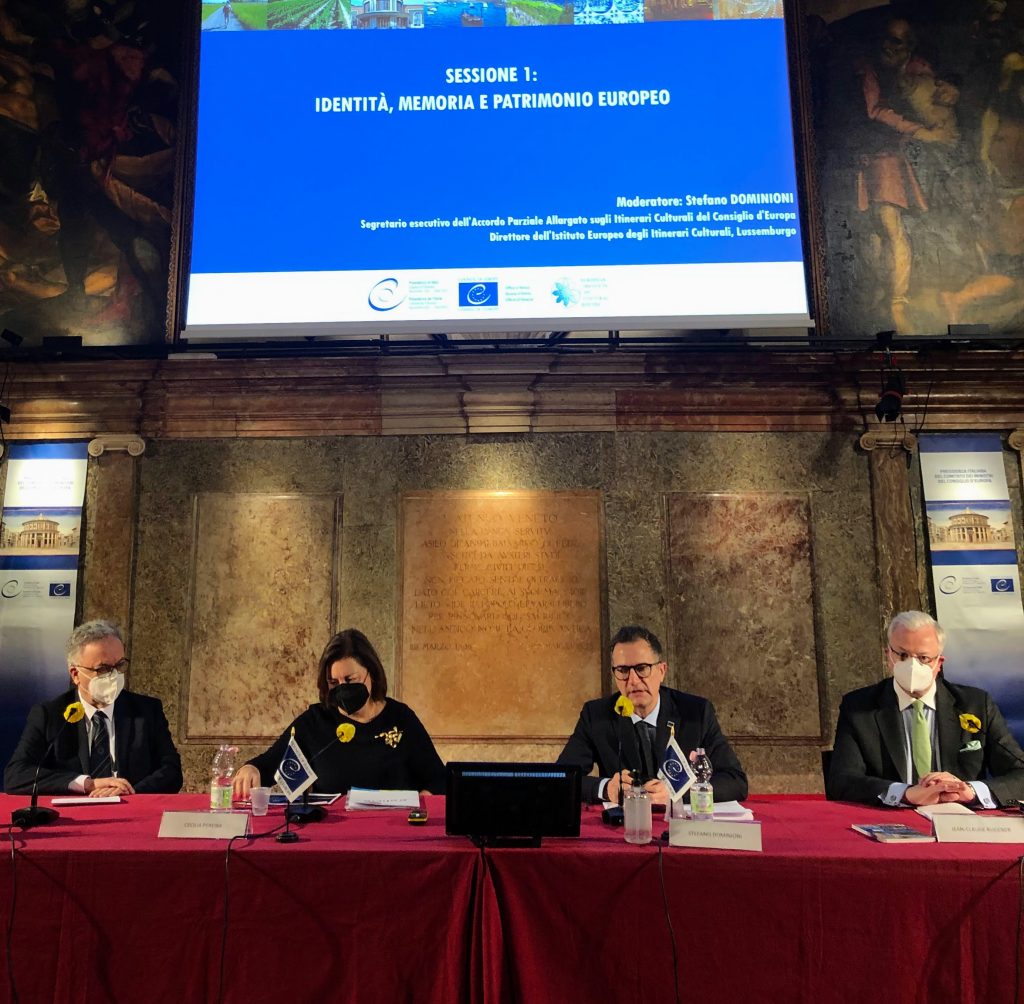
The Cultural Routes programme, launched by the Council of Europe in 1987 with the Declaration of Santiago, is a warranty of excellence that offers a model for transnational cultural and tourism management, fostering synergies between authorities and stakeholders at the European level and contributing to the creation of a community spirit. Out of the 45 certified itineraries, 29 pass through Italy, as the director of Venice’s Office Luisella Pavan-Woolfe reminded; she also highlighted the importance of Venice, an academic center and important cultural hub recognized on the European level. The city is actively involved in the Council of Europe’s activities related to the promotion of cultural heritage and freedom of expression. “Cultural routes can create and spread continuous exchanges of ideas and best practices also thanks to European funds, as witnessed by the European project “rurAllure” financed by Horizon 2020, born with the aim of enhancing the rural heritage of European routes“.
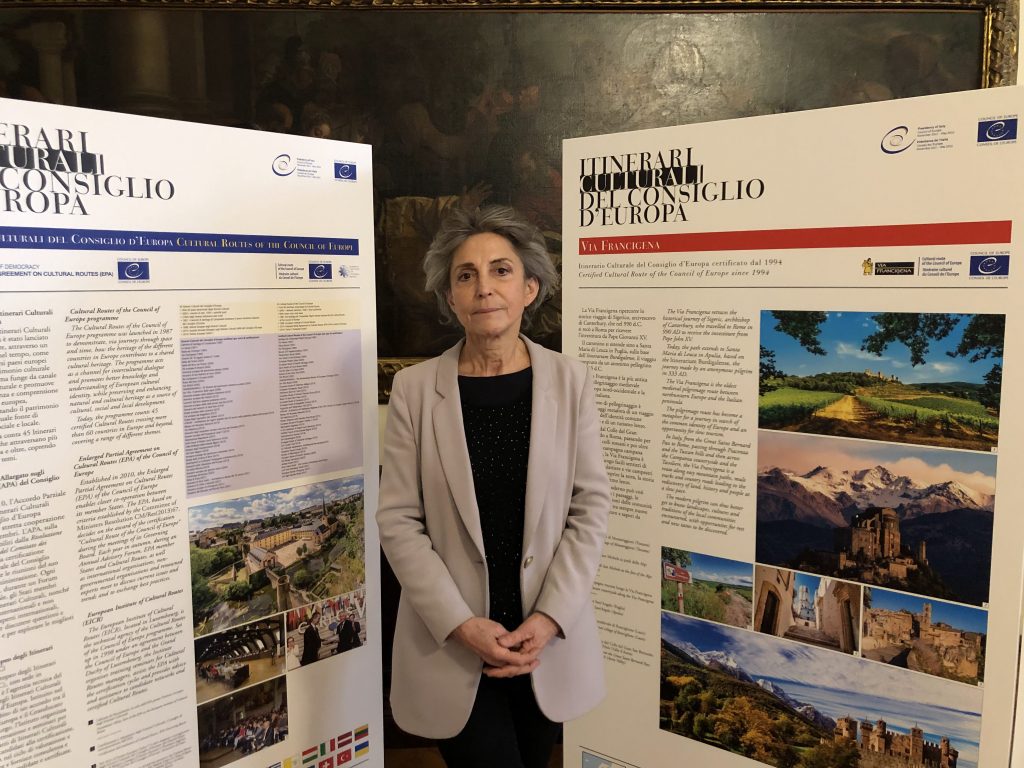
European identity, memory and heritage were the three key words of the day, which featured the Via Francigena and the Way of St James alongside the Phoenicians’ Route, the Via Romea Germanica, Atrium – dedicated to the architecture of Totalitarian Regimes – the European Mozart Routes, the Jewish Heritage Route and the Route of Historic Thermal Towns, as well as the Route of the Liberation of Europe and the Route of Historic Gardens. Roberta Alberotanza, member of the Task Force for the Italian Presidency of the Committee of Ministers of the Council of Europe, concluded the conference by saying that “it would take a lifetime to travel across all the itineraries presented today“. She then led the participants on a tour of the movable exhibition dedicated to the 29 Council of Europe itineraries with Italian network members.
